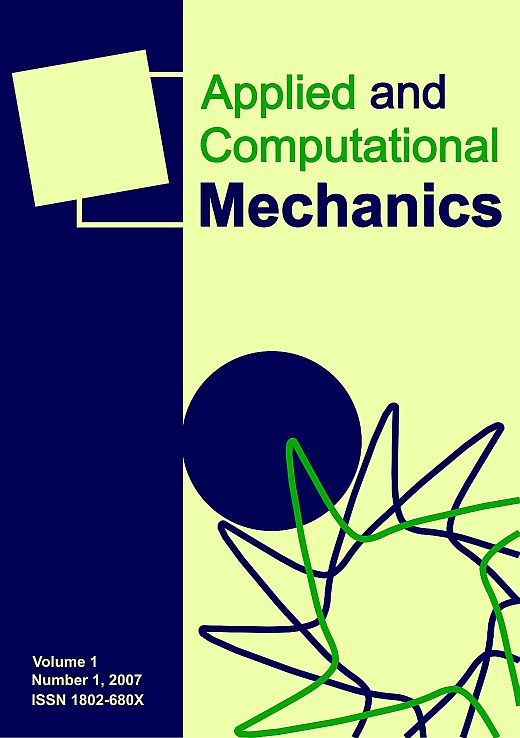Three-body segment musculoskeletal model of the upper limb
Keywords:
upper limb musculoskeletal model, muscle modeling, Hill-type muscle model, EMG measurementAbstract
The main aim is to create a computational three-body segment model of an upper limb of a human body for determination of muscle forces generated to keep a given loaded upper limb position. The model consists of three segments representing arm, forearm, hand and of all major muscles connected to the segments. Muscle origins and insertions determination corresponds to a real anatomy. Muscle behaviour is defined according to the Hill-type muscle model consisting of contractile and viscoelastic element. The upper limb is presented by a system of three rigid bars connected by rotational joints. The whole limb is fixed to the frame in the shoulder joint. A static balance problem is solved by principle of virtual work. The system of equation describing the musculoskeletal system is overdetermined because more muscles than necessary contribute to get the concrete upper limb position. Hence the mathematical problem is solved by an optimization method searching the least energetically-consuming solution. The upper limb computational model is verified by electromyography of the biceps brachii muscle.Downloads
Published
30-Jun-2013
Issue
Section
Articles
License
Copyright (c) 2016 Applied and Computational Mechanics

This work is licensed under a Creative Commons Attribution 4.0 International License.
How to Cite
[1]
L. Valdmanová and H. Čechová, “Three-body segment musculoskeletal model of the upper limb”, APPL COMPUT MECH, vol. 7, no. 1, Jun. 2013, Accessed: Dec. 09, 2025. [Online]. Available: https://acm.kme.zcu.cz//article/view/175







